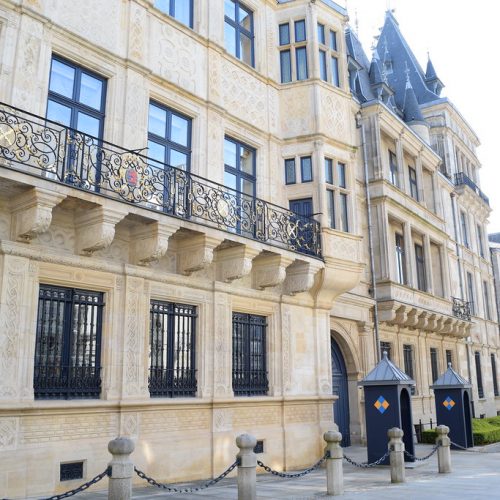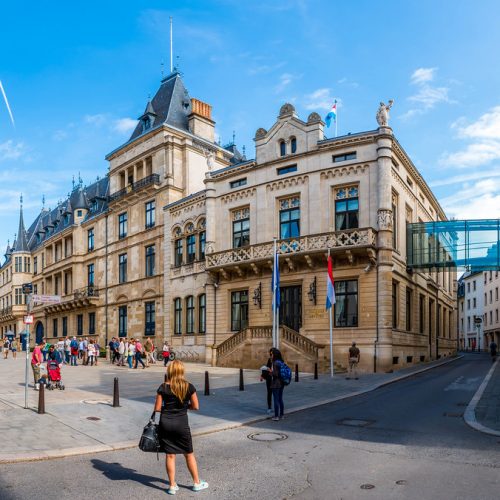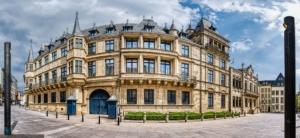Luxembourg City, the capital of the Grand Duchy of Luxembourg, is a charming and historic city with a rich cultural heritage. When you visit Luxembourg, one of the most prominent landmarks in the city is the Grand Ducal Palace, the official residence of the Grand Duke and Grand Duchess of Luxembourg. The palace is a beautiful example of Flemish Renaissance architecture and is open to the public during the summer months.
Table of Contents
Introduction to the Grand Ducal Palace
The Grand Ducal Palace is located in the heart of the city’s historic center, just a short walk from the Notre Dame Cathedral. The palace was built in 1572 and was originally the town hall of Luxembourg City. In 1890, the palace became the official residence of the Grand Duke and Grand Duchess of Luxembourg.
The palace is a majestic building with a Renaissance-style façade. The exterior of the palace is decorated with elaborate sculptures and carvings. The interior of the palace is also richly decorated with tapestries, paintings, and furniture.
The Grand Ducal Palace is a working palace, so it is not always open to the public. However, the palace is open for guided tours during the summer months. Tours are available in English, French, and German.
Since 1890, the structure has served as the residence of the dukes and duchesses of Luxembourg. However, it underwent a transformation during the Nazi occupation of World War II into a brewery and concert hall, resulting in significant damage to its original artwork and furnishings. Although Grand Duchess Charlotte redecorated the chambers in 1960, a complete renovation didn’t take place until the 1990s.
History and Architecture of the Grand Ducal Palace Luxembourg
The Grand Ducal Palace has a long and interesting history. The palace was built in 1572 as the town hall of Luxembourg City. Belgian architect Gédéon Bordiau and Luxembourgian state architect Charles Arendt were responsible for creating the palace.
The palace is an example of Flemish Renaissance architecture. Flemish Renaissance architecture is characterized by its use of classical elements such as columns, pediments, and arches. The palace is also decorated with elaborate sculptures and carvings.
An explosion of gunpowder seriously damaged the palace in 1572. The palace was rebuilt in 1741 by the Austrian architect Peter Thumb.
The palace was extensively renovated in the 19th century under Grand Duke Adolphe. During this renovation, a new wing was added to the palace, which contains family rooms and guest accommodations.
The palace has been the official residence of the Grand Duke and Grand Duchess of Luxembourg since 1890. The Grand Duke and Grand Duchess use the palace for both official and private purposes.

Visiting Hours and Ticket Information
- The Grand Ducal Palace is open to the public for guided tours during the summer months. Tours are available in English, French, and German.
- Tickets for tours can be purchased online or at the Luxembourg City Tourist Office. Tours last approximately one hour and 15 minutes.
- The palace is open from Monday to Sunday, from 10:00 a.m. to 4:00 p.m.
- Dress code: Visitors are expected to dress respectfully.
Accessibility Settings:
The Grand Ducal Palace is committed to guaranteeing all visitors have an experience that is easily accessible. The palace is furnished with several accessibility features to accommodate individuals with disabilities, which comprise:
Ramps: All entrances to the palace are equipped with ramps.
Lifts: There are lifts to all floors of the palace.
Adapted toilets: There are adapted toilets on all floors of the palace.
Induction loops: The palace is equipped with induction loops for people with hearing impairments.
Tactile signage: There is tactile signage throughout the palace for people with visual impairments.
Wheelchair access: The palace is fully accessible for wheelchairs.

Visit The Grand Ducal Palace: Tips for Visiting
- Book your tour in advance, especially if you are visiting during the peak season.
- Arrive early for your tour.
- Dress respectfully.
- Be respectful of the palace and its occupants.
- Take your time and enjoy the tour.
- Take photos and videos, but be respectful of other visitors.
Frequently Asked Questions
Can you go inside the Palais Grand Ducal?
Access to the Palais Grand Ducal is possible, although exclusively on guided excursions that happen during the summer season. Available tour languages include German, French, and English. Tour tickets are available for purchase at the Luxembourg City Tourist Office or through the Internet. The duration of tours is around 1 hour and 15 minutes. Tour reservations should be made in advance, particularly when traveling during the height of the season.
Who lives in the Grand Ducal Palace?
The Grand Ducal Palace has served as the designated residence and location for the Grand Duke to execute his responsibilities ever since more than a century ago. Its central location in Luxembourg City symbolizes the close connection between the Grand Ducal Family and the people of the country.
How much does the Grand Palais cost?
- Adults pay 15 euros
- Children aged four to twelve: 7.50 euros
- No charge for minors under the age of four.
- The benefit of the “Fondation du Grand-Duc et de la Grande-Duchesse” will be the recipient of every contribution.
How old is the Grand Ducal Palace?
The royal dynasty, heirs of William I (1772–1843), monarch of the Netherlands and grand duke of Luxembourg (1815–40), resides in the Grand Ducal Palace. Since its foundation in 1572, the palace has undergone expansions since 1895.
Why was the Palais Grand Ducal built?
The building served as Luxembourg’s city hall from 1572 until 1795, the prefecture’s seat for the Département des Forêts in 1795, and the government’s headquarters in 1817. The governor, who served as the grand duke of Holland’s representative, moved into the palace in 1817.

Conclusion
Hopefully, this blog post has provided you with a thorough introduction to the Grand Ducal Palace in Luxembourg City. I strongly advise anyone contemplating a journey to Luxembourg to pay a visit to the palace. The palace, an architectural marvel of historical significance, is an imperative sight for any visitor to the metropolis.
A few reasons for your visit to the Grand Ducal Palace are as follows:
- Its architecture is both historic and exquisite. As a magnificent example of Flemish Renaissance architecture, the palace is among Luxembourg City’s most recognizable monuments.
- The premises serve as the designated abode for the Grand Duke and Grand Duchess of Luxembourg. This signifies that you will have the opportunity to observe the residences and workplaces of members of the royal family.
- It contains an extensive assortment of artworks and antiquities. The palace houses an assemblage of furnishings, sculptures, and paintings from the sixteenth century.
- It provides English, French, and German guided excursions. This allows you to study the history and architecture of the palace in your native tongue.

